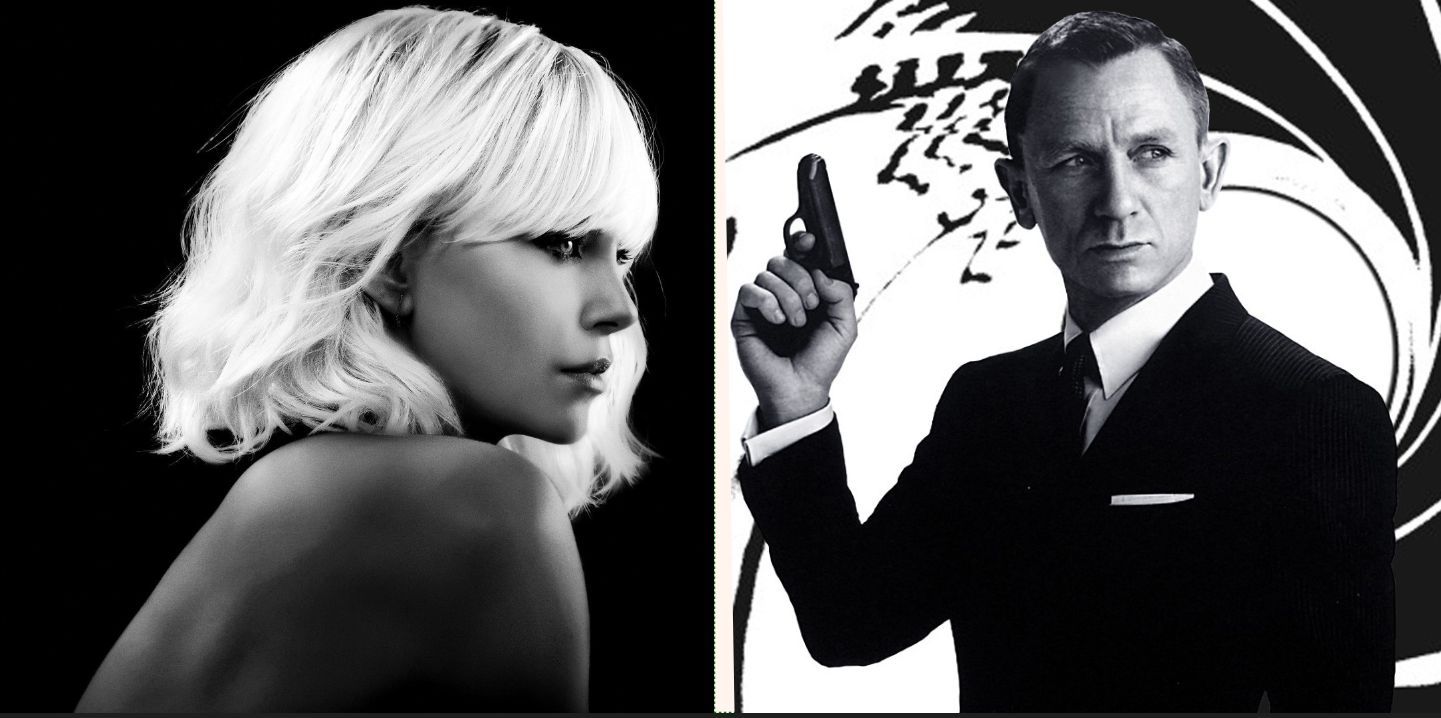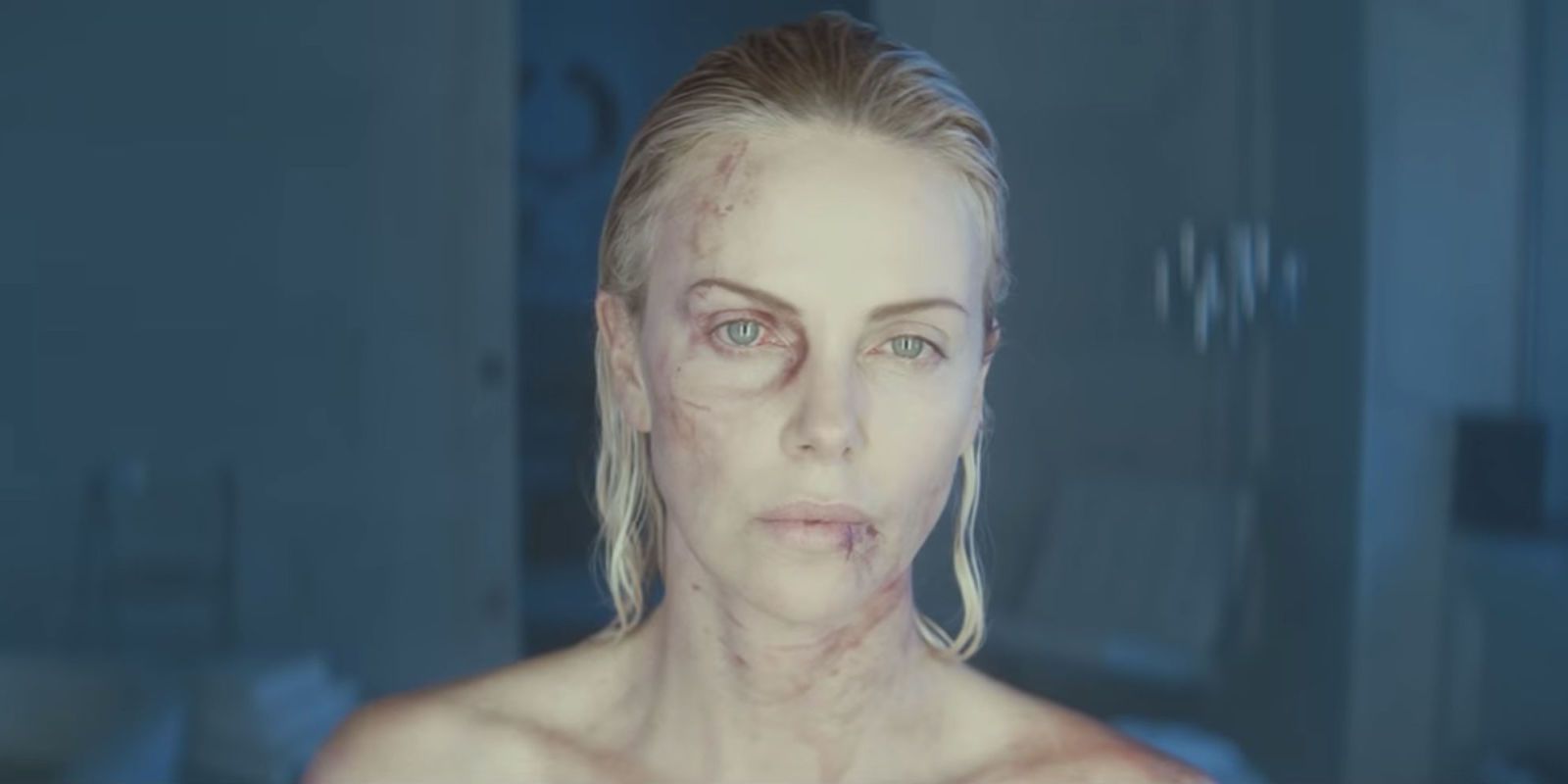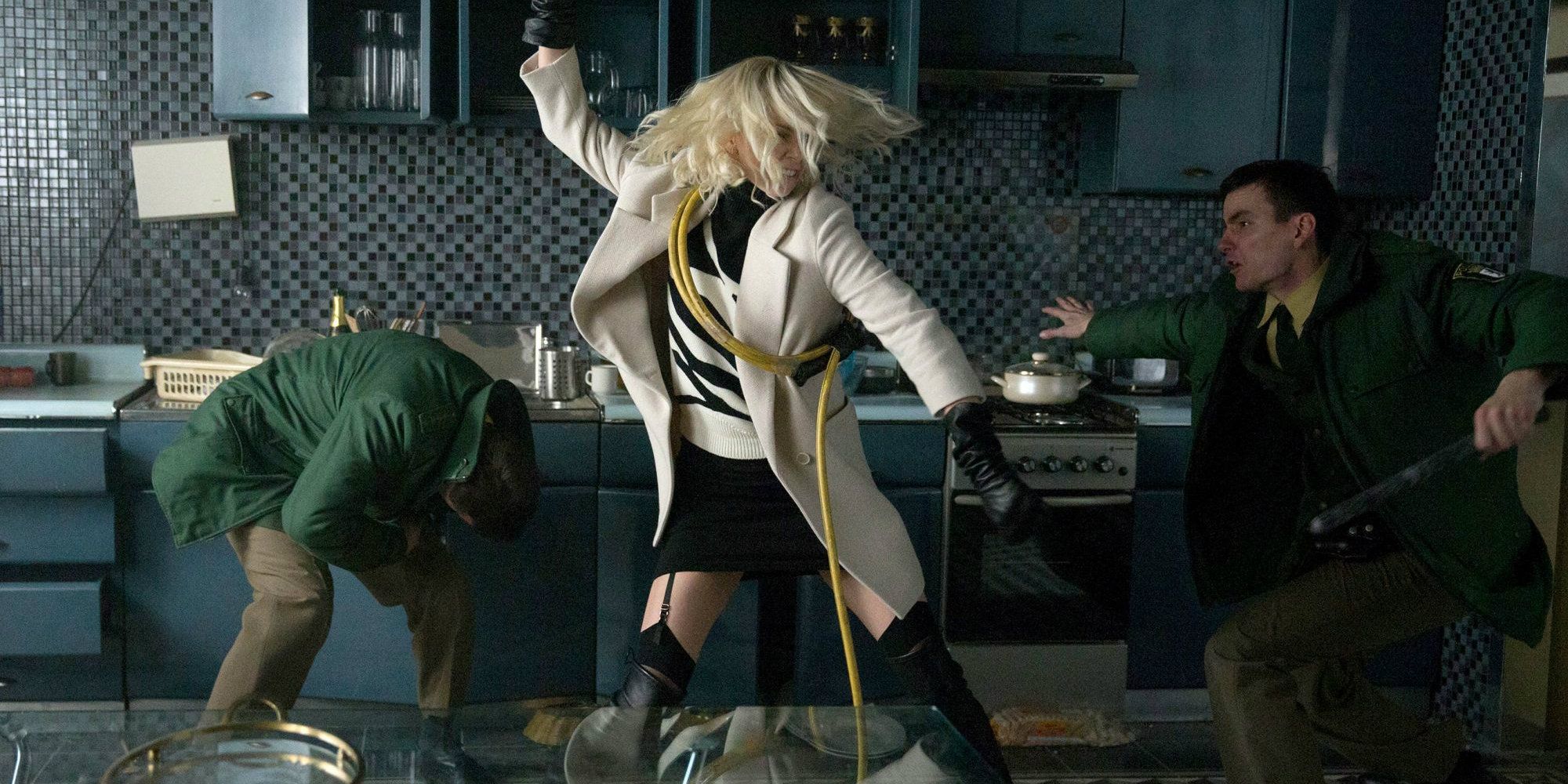Warning: SPOILERS for Atomic Blonde!
-
A British secret agent assigned to a dangerous mission, facing off against a cadre of international assassins in an exotic European backdrop to retrieve top secret intel in the name of Queen and country. What sounds like the latest (or, frankly, any) James Bond adventure also describes Atomic Blonde, the new action yarn starring Charlize Theron and directed by David Leitch (John Wick). Theron's titular heroine, MI6 agent Lorraine Broughton, has immediately drawn comparisons to 007, cinema's premiere super spy currently embodied by Daniel Craig. The easy shorthand to describe Theron and her film is she plays "a female James Bond." However, this lazy description actually does Theron and what she accomplishes in Atomic Blonde a grave disservice. Charlize Theron in Atomic Blonde is so much more than just a gender-reversed clone of 007.
It's true that the enduring popularity of the James Bond franchise has defined how spies are portrayed and how they behave in movies. James Bond was not the first spy in cinema, but he and the tropes the Bond franchise created are the standard nearly every spy movie homages or at the very least addresses in one form or another. Atomic Blonde certainly pays lip service to classic Bond concepts: Set in November 1989, towards the end of the Cold War with the Berlin Wall about to fall, agent Lorraine Broughton is called to MI6 where she receives her orders not just from her supervisor Eric Gray (Toby Jones) but from MI6's Chief C (James Faulkner) - similar to how Bond's commander is known only as M. Broughton is always impeccably attired; stays in a swanky West Berlin hotel; engages in a hot and heavy tryst with Atomic Blonde's version of a Bond Girl, the naive French agent Delpine Lasalle (Sofia Boutella), and battles numerous spies and traitors from multiple nations in order to locate a MacGuffin - a List of MI6 deep cover agents on both sides of the Berlin Wall, including the identity of the mysterious double agent Satchel.
While Atomic Blonde feels fantastical, it's squarely set in what's recognizably 20th century history. The James Bond franchise from Sean Connery to Pierce Brosnan was set in our world as well, using our history and changing geopolitical climate as the springboard for Bond's adventures. Bond was a product of the Cold War (later a "relic of the Cold War," as Judi Dench's M once admonished Brosnan's 007) whose heroics foiled global terrorist organizations and garnered key victories in the conflict between East and West. Since the 2006 reboot of the franchise, Daniel Craig's Bond became disconnected from both 007's history and our own. Craig's 007 never fought in the Cold War and his adventures exist in their own alternate universe; the Bond franchise now is self-contained and forward-looking, making fleeting mention of MI6's role in world history. Bond has become a universe unto itself. Not so with Atomic Blonde.
Next Page: [valnet-url-page page=2 paginated=0 text='An%20Atomic%20Blonde%20Franchise%3F']
The differences between Lorraine Broughton and her forebearer James Bond - or Matt Damon's Jason Bourne, for that matter - are stark and innovative. Atomic Blonde sets itself squarely in the midst of one of the most pivotal moments of the 20th century, the collapse of the Iron Curtain. As Broughton risks life and limb trying to recover the List, the Berlin Wall is literally being smashed all around her. Though it's set decades later, the Jason Bourne films, especially The Bourne Supremacy and The Bourne Ultimatum directed by Paul Greengrass, feel more kindred to Atomic Blonde both in the griminess of its setting (as opposed to the glamor of Bond's) and in how immediate, visceral, and bloody the action is. (Craig's 007 has taken many cues from Bourne as well by ramping up the violence Bond both inflicts and has inflicted upon him).
Broughton's fight scenes come at an evident cost; when we first glimpse her, she's trying to soothe her bloody, bruised and scarred body in an ice bath. She is increasingly wounded throughout the film but grits her teeth and bears it. Broughton may be as invincible as Bond or Bourne, but she doesn't feel like or come off as a bulletproof white knight. She even smokes; a habit Bond has long since abandoned. Meanwhile, director Leitch brings the whirlwind ferocity he displayed in John Wick to Atomic Blonde, creating fight sequences of harrowing brutality and a ballet of cars and bodies hurtling across space as Broughton makes her escapes. The bruises and black eye Broughton brandishes throughout the film never let us forget how dangerous her life is.
Bond is immune to popular trends (Connery voiced his disdain for The Beatles in Goldfinger) and the only place major pop music acts can be found in a Bond movie is during the opening credits. Any hint of pop culture is completely absent from Jason Bourne's existence, with the lone saving grace of a new remix of Moby's "Extreme Ways" over each new movie's end credits. Atomic Blonde blasts 1980s pop hits from New Order, Nena, and David Bowie at the audience; the songs aren't just on the soundtrack but the characters also listen to them on their Walkmans. Similar to Edgar Wright's Baby Driver, Atomic Blonde makes the music part of the text, helping to hurtle the audience along from moment to moment.
Broughton herself, however, is Atomic Blonde's greatest innovation and contribution to the cinematic spy genre. She isn't the first female super spy in movies - fellow Oscar winners like Halle Berry as Jinx in the James Bond film Die Another Day and Angelina Jolie as Evelyn Salt in Salt have portrayed female secret agents - but Theron now has the best chance to launch a major spy franchise with a female lead. (Neither rumored Jinx spin-off nor a sequel to Salt ever materialized). While she seems to be a cipher and emits a steely cool and unflappable sexy exterior, we later learn that Broughton keeps her cards close to her chest by necessity - she's actually an American triple agent working against both the Russians and the British (which helps explain the questionable authenticity of her British accent). There were hidden layers to Broughton she had to keep buried which a sequel will hopefully give Theron a chance to bring to light.
In an era of movies where audiences are subjected to incessant sequels, reboots, re-imaginings, and recastings of established movie icons, it's more important than ever for filmmakers to create and cultivate new characters who can grow to become the next movie icons. Theron's titular Atomic Blonde is a successful leap forward as a major new action heroine and focal point of a potential franchise. Theron threw herself body and soul into the role, as she's said to have performed the majority of her own stunts. The results of her dedication are up there on the screen for audiences to behold; Theron is unforgettably bad ass and instantly iconic as Lorraine Broughton. Atomic Blonde isn't a perfect film - its serpentine plot of spy games is too convoluted, which may leave audiences as befuddled as they are energized - but as an action film it's of the highest caliber. By the time Atomic Blonde concludes, Charlize Theron has left us shaken and stirred - and wanting more of Lorraine Broughton.



